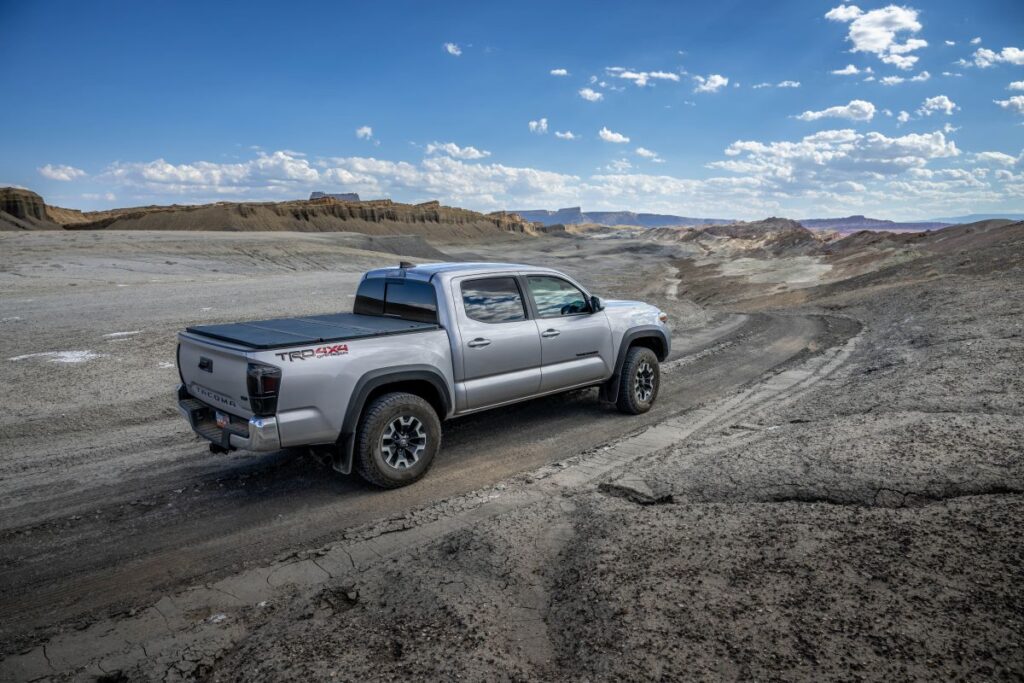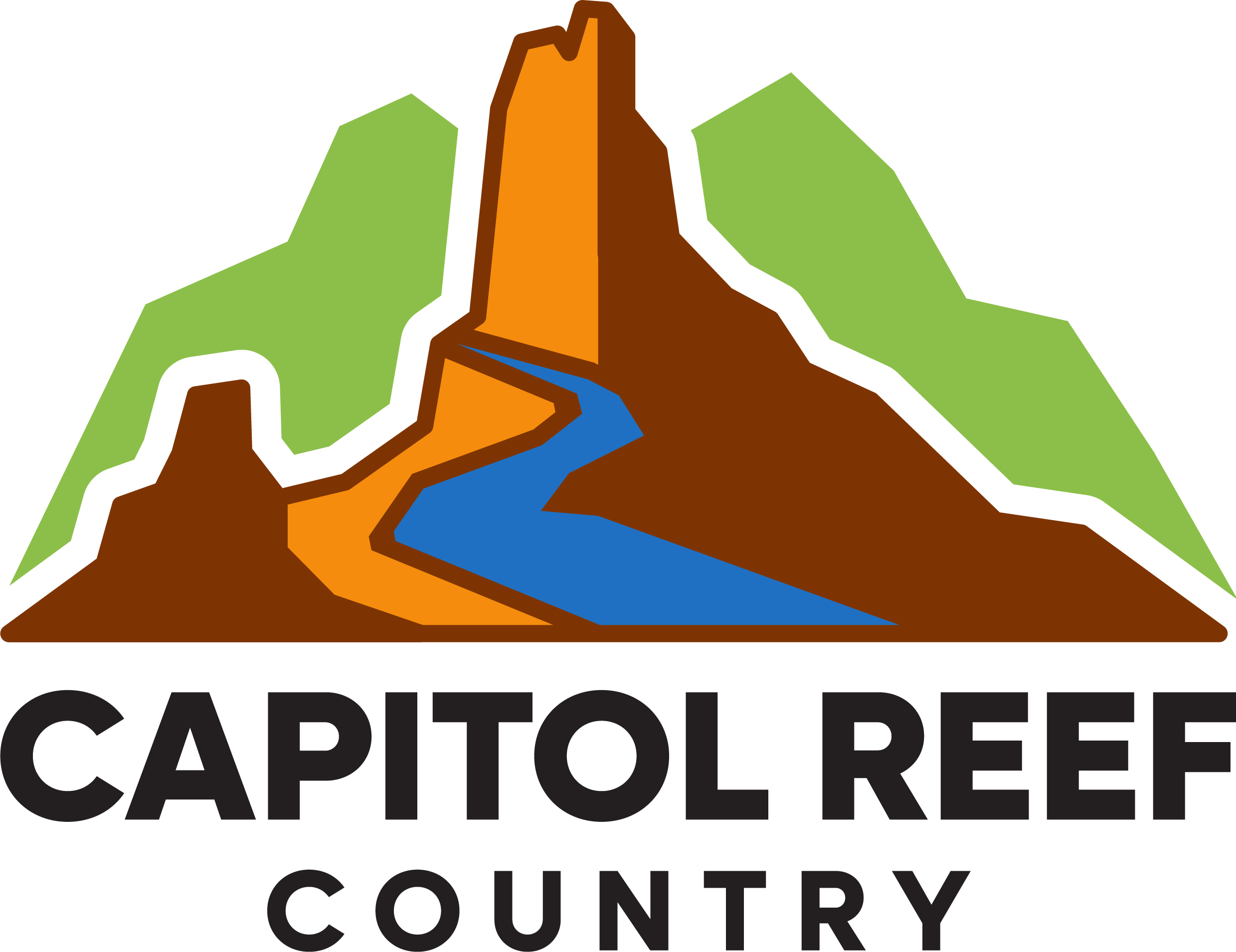The backcountry areas of Capitol Reef National Park in Utah provide visitors with exceptional opportunities to explore its jaw-dropping landscapes while offering endless adventure where crowds are non-existent. Two of the park’s most popular backcountry areas include Cathedral Valley with its towered monoliths and the Waterpocket Fold with its canyons, reefs, and cliffs.
These places are way off the beaten path, before and while traveling in the backcountry be aware of potential of flash floods, crazy weather, and rough ground that can sneak up on you. Keep safety first when cruising the dirt roads or hitting those backcountry trails. Here are a few tips to keep in mind when venturing off-road into Capitol Reef Country.

Best Time to Visit
The best time to explore Capitol Reef’s remote areas are during spring months (March to May) and fall seasons (September to November) because temperatures are generally more comfortable ranging from 50°F to 80°F. The park displays its most beautiful wildflowers during spring while autumn brings vibrant leaf colors and both seasons provide excellent hiking conditions and pleasant atmosphere. Popular trails and routes attract more visitors during spring but fall season brings complete peace to the park as if it displays a “do not disturb” sign.
Summer months (June through August) bring extreme heat to the area when temperatures reach above 90°F and can occasionally reach triple digits. These are the months when heading to the higher plateaus such as Boulder Mountain become a good option where elevations are between 7,000 – 11,000 ft. The winter season frequently brings snow giving Capitol Reef Country an additional layer of contract on its red rock landscapes. Come prepared freezing temperatures in the early and late hours and possible road closures due to icy conditions and short daylight hours.
Check the weather forecast before your visit, conditions can develop and change quickly leading to dangerous situations such as flash floods during the summer season.

Recommended Vehicles for Back Road Travel
The backcountry roads of Capitol Reef National Park consist of paved scenic routes and challenging off-road paths that can test the limits of your vehicle. The Scenic Drive and its connected routes including Grand Wash and Capitol Gorge allow standard passenger vehicles and RVs up to 27 feet to travel safely under normal weather conditions. The Cathedral Valley Loop and Hartnet Road and Burr Trail require high-clearance vehicles because their rough terrain includes deep ruts and water obstacles. The Fremont River crossing on Hartnet Road and wet road conditions demand four-wheel drive (4WD) for safe travel. Low-clearance sedans and trailer-towing vehicles are not recommended for navigating the steep switchbacks on Burr Trail. To access the more rugged backcountry trails you may want to rent a vehicle off-road capable to access these remote areas. The Scenic Drive and its connecting roads including Grand Wash and Capitol Gorge allow standard vehicles and RVs up to 27 feet to travel when weather conditions remain stable.
Electric vehicle users need to be aware that there are no charging stations available in the remote areas of the park so they must plan their routes carefully.
How to Prepare for Traveling the Backcountry Roads
The remote areas of Capitol Reef require proper preparation to prevent accidents from happening. The National Park Service website alerts page and (435) 425-3791 phone number provide visitors with the latest information about road conditions and weather updates. The staff at the visitor center located in the Fruita Historic District can help you with route planning. The visitor center offers free backcountry permits for overnight stays and canyoneering activities which you can obtain either in person or through their website. The warning system for flash floods operates differently for canyon routes so you need to check the current conditions. You may want to bring paper maps for offline access because cell phone coverage remains limited. Share your planned route with someone before your departure and set a return time for your trip.

List of Items to Take in Your Vehicle
The back roads of Capitol Reef require visitors to bring self-sufficient supplies because assistance may take multiple hours to reach. The following list contains all necessary items for your trip.
- Each person needs at least one gallon of water daily together with electrolyte supplements. A collapsible water container serves as a tool to purify silty water when needed.
- Emergency food supplies should include non-perishable items such as energy bars and nuts and prepared meals like oatmeal or rice packets.
- The navigation tools consist of paper maps and GPS devices and offline applications and a compass for off-road hiking.
- A vehicle repair kit should contain a spare tire and jack and tire iron and jumper cables and basic tools and a shovel for sand and mud extraction.
- The essential items for sun and weather protection include high SPF sunscreen and hats and sunglasses and rain gear and multiple layers of clothing for temperature fluctuations.
- The emergency kit should contain a first-aid kit and multi-tool and flashlight or headlamp with spare batteries and emergency blanket and whistle.
- Other essentials should include insect repellent for deerflies and trash bags for leaving no trace and binoculars for wildlife observation and a full gas tank with extra fuel because stations are infrequent.
Recommended Backcountry Places to Visit
The backcountry of Capitol Reef National Park reveals extraordinary landscapes to visitors who choose to explore beyond established trails. The following list presents the most popular backcountry locations which can be reached by using off-road routes:
- The remote Cathedral Valley area contains two prominent monoliths named Temples of the Sun and Moon. The 58-mile Cathedral Valley Loop provides drivers with spectacular views of spire-like rock formations while the primitive campground offers perfect conditions for stargazing.
- The Muley Twist Canyon attracts visitors because of its winding passage and its notable Brimhall Arch structure. The Notom-Bullfrog Road provides access to Hike or drive through this area.
- The Halls Creek Narrows presents a deep sandstone canyon with water sources that form oases during backcountry excursions which start from southern roads.
- The Hartnet Road leads to South Desert and Blue Flats which provide vast empty spaces with breathtaking views of the surrounding landscape.
- The Notom-Bullfrog Road provides access to Lower Muley Twist and Halls Creek which offer day hiking opportunities into narrow canyon areas.
The protected areas of the park need suitable vehicles and camping permits to access their untamed natural beauty.

The backcountry exploration of Capitol Reef National Park provides an exceptional journey which unites breathtaking scenery with deep solitude. Your backcountry experience will become unforgettable when you combine environmental stewardship with safety measures and thorough planning. The fragile wilderness requires your adherence to Leave No Trace principles to protect it for upcoming explorers.
Keep Capitol Reef Country Forever Mighty
What is Forever Mighty? It’s practicing responsible travel while visiting Utah and Capitol Reef Country by following the principles of Tread Lightly and Leave No Trace.
Plan ahead and prepare, travel and camp on durable surfaces, dispose of waste properly, leave what you find, minimize campfire impacts, respect wildlife, be considerate of others, support local business and honor community, history and heritage. Help us keep Utah and Capitol Reef Country’s outdoor recreation areas beautiful, healthy, and accessible.
Plan ahead and prepare, travel and camp on durable surfaces, dispose of waste properly, leave what you find, minimize campfire impacts, respect wildlife, be considerate of others, support local business and honor community, history and heritage. Help us keep Utah and Capitol Reef Country’s outdoor recreation areas beautiful, healthy, and accessible.
